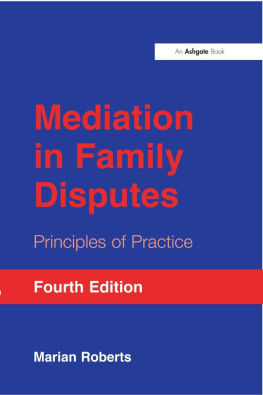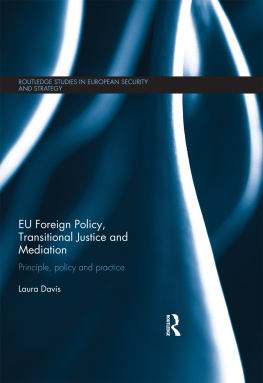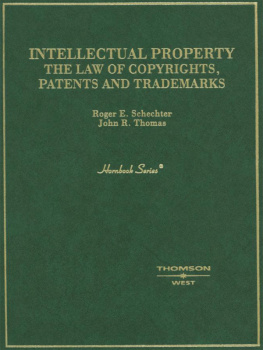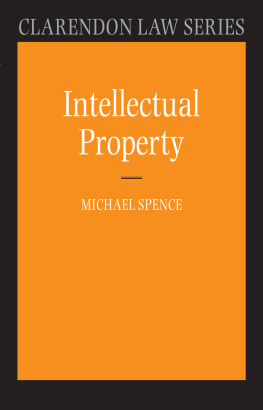CONFLICT OF LAWS IN INTELLECTUAL PROPERTY
CONFLICT OF LAWS IN INTELLECTUAL PROPERTY
THE CLIP PRINCIPLES
AND COMMENTARY
EUROPEAN MAX PLANCK GROUP ON
CONFLICT OF LAWS IN
INTELLECTUAL PROPERTY (CLIP)


Great Clarendon Street, Oxford, OX2 6DP,
United Kingdom
Oxford University Press is a department of the University of Oxford.
It furthers the Universitys objective of excellence in research, scholarship,
and education by publishing worldwide. Oxford is a registered trade mark of
Oxford University Press in the UK and in certain other countries
European Max Planck Group on Conflict of Laws in Intellectual Property 2013
The moral rights of the author have been asserted
First Edition published 2013
Impression: 1
All rights reserved. No part of this publication may be reproduced, stored in
a retrieval system, or transmitted, in any form or by any means, without the
prior permission in writing of Oxford University Press, or as expressly permitted
by law, by licence or under terms agreed with the appropriate reprographics
rights organization. Enquiries concerning reproduction outside the scope of the
above should be sent to the Rights Department, Oxford University Press, at the
address above
You must not circulate this work in any other form
and you must impose this same condition on any acquirer
Crown copyright material is reproduced under Class Licence
Number C01P0000148 with the permission of OPSI
and the Queens Printer for Scotland
British Library Cataloguing in Publication Data
Data available
ISBN 9780199665082
Printed in Great Britain by
CPI Group (UK) Ltd, Croydon, CR0 4YY
Links to third party websites are provided by Oxford in good faith and
for information only. Oxford disclaims any responsibility for the materials
contained in any third party website referenced in this work.
PREFACE
This volume presents the results of collaborative research that extended over seven years from the end of 2004 to the end of 2011. The European Max Planck Group on Conflict of Laws in Intellectual Property (CLIP) was established for the very purpose of conducting that research on the initiative of the two Max Planck Institutes for Comparative and International Private Law in Hamburg and for Intellectual Property and Competition Law in Munich. The CLIP Group consisted of several researchers from the two Institutes and a number of law professors from other European countries who are experts in the field of private international law and/or intellectual property. Given the length of the project, the composition of the Group changed over time. Also, some researchers working at the two Institutes at the time when the project started were later appointed law professors at Universities in Germany, but remained permanent members of the Group. At the two Institutes, over the years, the CLIP Group was moreover assisted by some junior researchers and doctoral students who took an active part in working on the text. Their work is acknowledged by listing them as members of the Hamburg and Munich teams.
The Group met 18 times. In the first phase of the project, which took most of the time, the Group drafted the text of the Principles on Conflict of Laws in Intellectual Property, the CLIP Principles. Given the particular working style of the Group there was usually no need to vote on the text. Rather, discussions went on until none of the members of the Group would ask for further changes. This does not exclude, of course, that some rules were more controversial than others. In sum, the text is to be considered the result of the co-authorship of all of these scholars.
At a relatively early point in time, the CLIP Group decided to put the Draft Principles on a newly created website (>.
Following the example of similar projects, the Comments and Notes aim to provide a better understanding of the Principles. The Comments explain the meaning of the Principles, inform on the linkages and interaction between the different Articles of the Principles and illustrate the working of the Principles in practice by hypothetical cases. In contrast, the Notes aim to explain the options that existed for solving certain issues against the background of a comparative analysis of the existing law, including the rules and principles of international public law, European law and the law of individual States, and why certain options have been preferred. In addition, the Notes take account of similar scholarly proposals, namely the ALI Principles of 2008 (Intellectual Property: Principles Governing Jurisdiction, Choice of Law, and Judgments in Transnational Disputes), For ease of navigation and referencing, the comments and notes have been given paragraph numbers in the margin. The first number denotes the Part, the second denotes the article, and the third denotes either the number of commentary or note relating to that article. The letters C and N indicate whether the paragraph number relates to a Comment or a Note. The CLIP Group would like to thank a number of institutions and persons for supporting the research project over many years and for making this publication possible. Above all, this includes the Max Planck Society for the Advancement of Science, which financed the project over so many years, and the publisher Oxford University Press, which demonstrated flexibility in getting this volume accepted and published so quickly.
Jrgen Basedow and Josef Drexl
Hamburg and Munich
22 July 2012
TABLE OF CONTENTS
Members of the European Max Plank Group on Conflict of Laws in
Intellectual Property
Alexander Peukert
Paul Torremans
Christian Heinze
Christian Heinze
Annette Kur
Annette Kur
Annette Kur
Paul Torremans
Christian Heinze
Christian Heinze
Christian Heinze
Christian Heinze
Axel Metzger
Axel Metzger
Paul Torremans
Paul Torremans
Christian Heinze
Christian Heinze
Annette Kur
Christian Heinze
Graeme Dinwoodie
Graeme Dinwoodie
Mireille van Eechoud/Alexander Peukert
Mireille van Eechoud/Alexander Peukert
Mireille van Eechoud/Alexander Peukert
Mireille van Eechoud/Alexander Peukert
Mireille van Eechoud/Alexander Peukert
Mireille van Eechoud/Alexander Peukert
Jrgen Basedow
Jrgen Basedow
Jrgen Basedow
Josef Drexl
Josef Drexl
Paul Torremans
Paul Torremans
Axel Metzger
Axel Metzger
Christian Heinze
Axel Metzger
Axel Metzger
Axel Metzger
Axel Metzger
Annette Kur
Annette Kur
Annette Kur
Annette Kur
Annette Kur
Annette Kur
Axel Metzger
Christian Heinze
Christian Heinze
Christian Heinze
Paul Torremans
Paul Torremans










